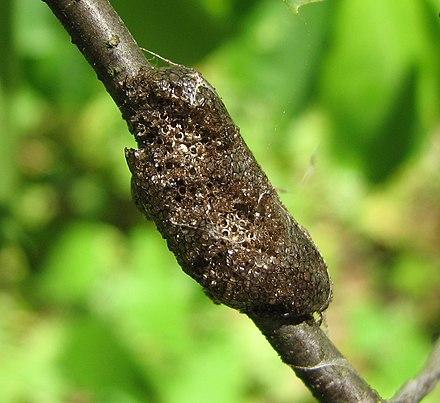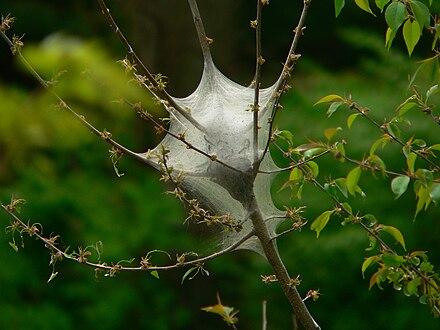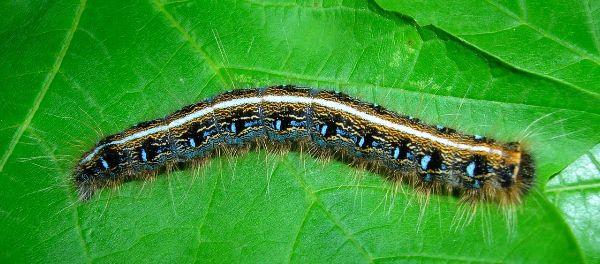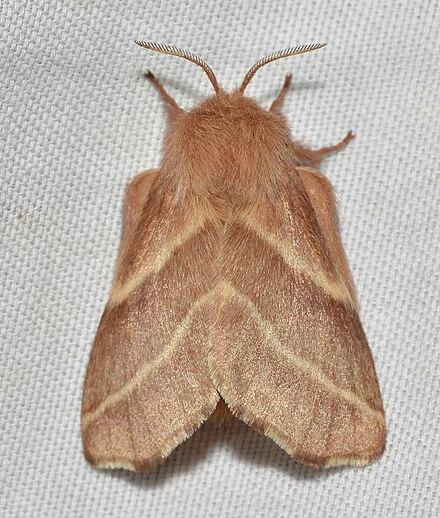by Ilse Gebhard, KAWO member
For a long time I did not realize that there are actually two species of moths in our area whose caterpillars spin the easily spotted silken webs in many of our trees. Nor did I realize that one does it in spring and the other in fall.

In mid-summer the female Eastern Tent Caterpillar (Malacosoma americanum) moth lays her eggs in a mass that hardens around a twig. David L. Wagner in Caterpillars of Eastern North America notes that the first instar larva develops fully in the first summer but holds within the egg through the winter months. Preferred trees for egg laying are in the rose family and include apple, cherry and hawthorn.

In spring the eggs hatch and the larvae spin their familiar communal silken tents in the crotches of the host tree. Many caterpillars take shelter in each nest, from which they emerge to feed on the young leaves of the branches extending from the nest. They then return to the safety of the nest to digest their food. According to Wagner the tent not only provides some protection from predators like birds, but also serves as a greenhouse on cool days, allowing the caterpillars to raise their body temperature above the ambient, facilitating digestion and other metabolic processes.

The last instar of this caterpillar is quite striking. It has a black head and is covered with orange-yellow hair. A white stripe, bordered by thin orange and black ones, runs down the middle of the back. The sides are blue with an orange stripe. Each segment has a black and blue eyespot on either side.

The mature caterpillar wanders off, sometimes quite a distance, to spin its pale-yellow cocoon. Since the caterpillar is so common, I never bothered to raise one, although one early June I brought in a mystery cocoon I had found on the side of our house, several feet away from a crabapple tree. A week later the moth emerged and it turned out to be this species. It was light brown with two lighter diagonal stripes on each forewing.
By late summer or early fall the webs of the tent caterpillar have broken down and disappeared, battered by wind and rain and picked apart by birds looking for a meal. Fuzzy caterpillars of moths such as Gypsy, Eastern Tent and Fall Webworm are a favorite food source of both the Yellow-billed and Black-billed Cuckoos. They not only eat them themselves, but also feed them to their young, keeping the caterpillar populations somewhat in check and our birds in food.
